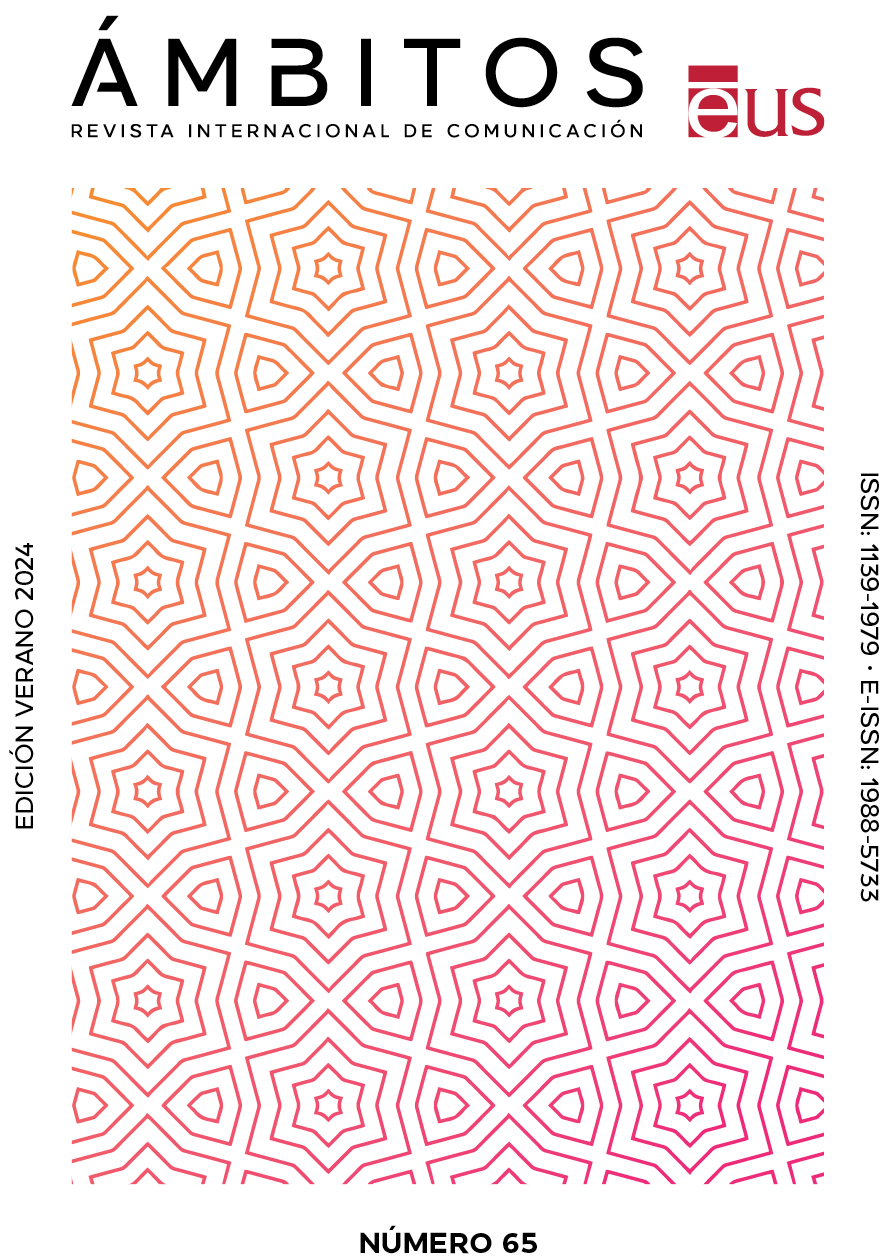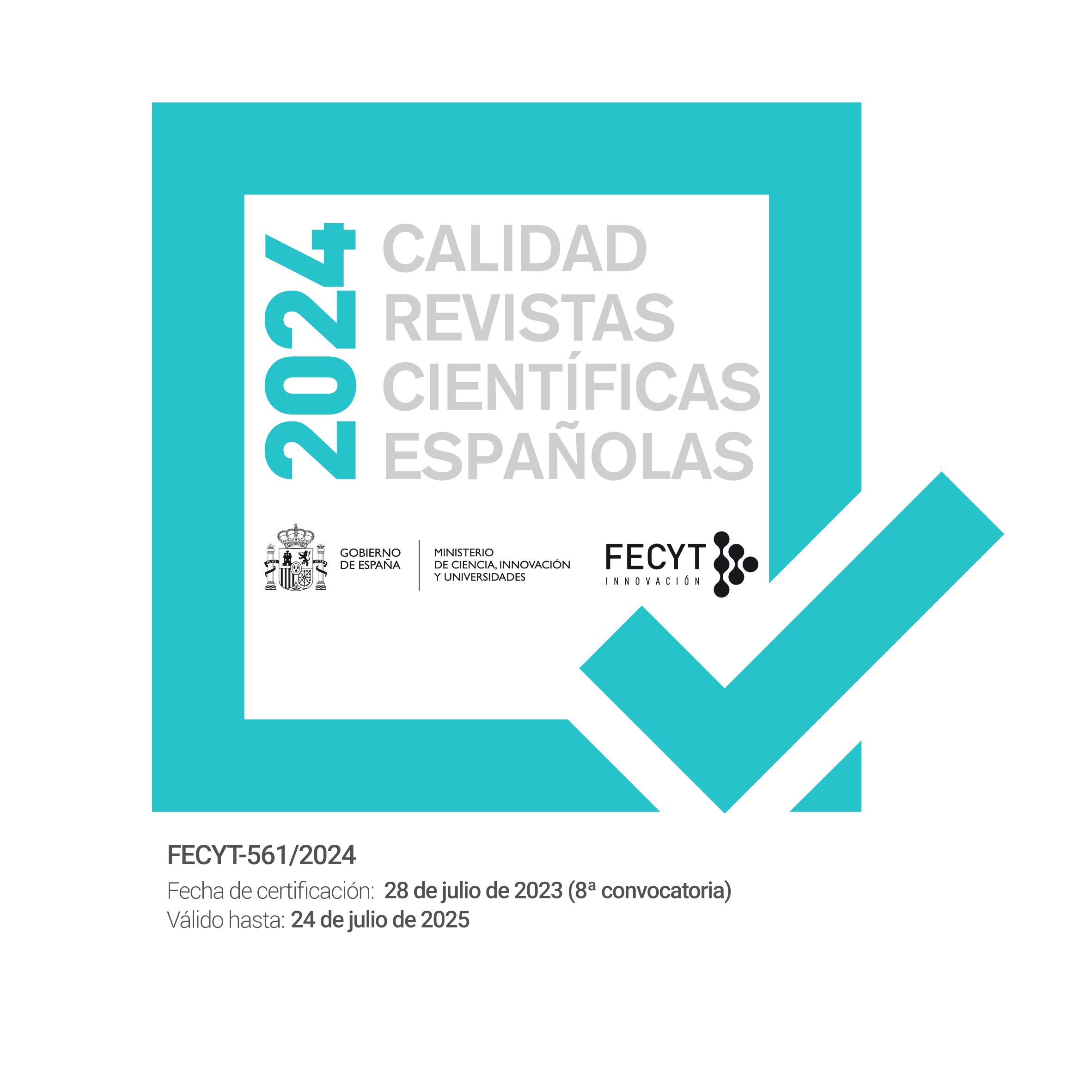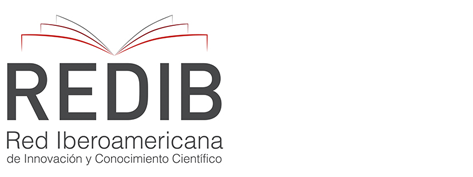Psychosocial analysis of the representation of functional diversity on television as a media literacy strategy
DOI:
https://doi.org/10.12795/Ambitos.2024.i65.02Keywords:
functional diversity, disability, social representation, television, educational innovation, tv seriesAbstract
Television is a powerful socializing agent that contributes to generating, perpetuating, or breaking down stereotypes towards minority and subalternized groups. Media representation of functional diversity is fundamental to maintaining stereotypes or providing positive referents that break archetypal representations. Platforms such as Netflix have increased their representation on and off screen, offering more complete and inclusive portrayals. This article presents the lessons learned from a teaching innovation practice based on media literacy in higher education. The aim of this study was to conduct a critical analysis of the presence and representation of diversity in popular streaming series from a psychosocial perspective. To this end, students enrolled in the Bachelor’s Degrees in Journalism and Psychology at the University of Seville were assigned a series popularized between the years 2020 and 2022. The series under analysis were: Breaking Bad, Glee, Community, POSE, Orange is the New Black, Sherlock, and Prison Break. Following an adaptation of the Zaptsi-Garrido Test (Zaptsi & Garrido, 2021 y Zaptsi et al., 2021), students viewed the series and performed a quantitative and qualitative analysis of the main characters. After the analysis, students shared the findings in a discussion session with the aim of raising awareness about media literacy in the digital age. The results indicate the presence of archetypes (e.g., the “villain” or the “victim”) and stigmatizing representations of individuals with functional diversity. In addition to discussing the results, some series produced and/or performed by individuals with functional diversity are included, thereby expanding the tools for future research and interventions on media education for inclusivity.
Downloads
Metrics
References
Appelbaum, L. (2020, May 4). Disability Portrayal on Screen Hits a Landmark High, Yet Reinforces Negative Stereotypes. RespectAbility. https://www.respectability.org/2020/05/see-jane-study-disability-portrayals/
Bandura, A. (1983). Psychological mechanisms of aggression. In R.G. Geen & I. Donnerstein (Eds.), Aggression: Theoretical and Empirical Reviews (pp.1–40). Academic Press.
Bazalgette, C. (2007). Carta Europea de educación en Medios (Bruselas). Comunicar, XV(28), 137-142.
Bonilla-del-Río, M., Valor-Rodríguez, L., & García-Ruiz, R. (2018). Alfabetización mediática y discapacidad: Análisis documental de literatura científica en Web of Science (WoS) y Scopus. Prisma Social, 20, 1-20.
Brevig, S. (2023, October 19). The Case for Authentic Disability Representation in Media and Why Our Society Desperately Needs It. Center for Scholars & Storytellers. bit.ly/3UyYzKi
Callus, A. M., & Camilleri-Zahra, A. (2019). ‘Nothing about us without us’: disabled people determining their human rights through the UNCRPD. Mediterranean Human Rights Review, (1), 1-26.
Cánovas, G. (2014). Menores de Edad y Conectividad Móvil en España: Tablets y Smartphones. PROTEGELES.
Cánovas Leonhardt, P., & Sahuquillo Mateo, P. (2008). La Influencia del Medio Televisivo en el proceso de Socialización de la Infancia. Education in the Knowledge Society (EKS), 9(3), 200–215. https://doi.org/10.14201/eks.16676
Chen, G. (s/f). Autism Goes to Hollywood: Our Favorite Documentaries, Movies and TV Shows Depicting Characters with Autism. Stages Learning. bit.ly/3Uy2GGA
Charlton, J. I. (2000). Nothing about us without us: Disability oppression and empowerment. University of California Press.
Cohen, J. (2001). Defining identification: A theoretical look at identification of audiences with media characters. Mass Communication & Society, (4), 245-264. https://doi.org/10.1207/S15327825MCS0403_01
Cohen, J. (2003). Parasocial breakups: Measuring individual differences in responses to the dissolution of parasocial relationships. Mass Communication & Society, (6), 191-202. https://doi.org/10.1207/S15327825MCS0602_5
Consejo Europeo. Consejo de la Unión Europea. Infografía - La discapacidad en la UE: datos y cifras. https://bit.ly/3wvGkxq
Creswell, J. W. (2002). Educational Research. Planning, Conducting, and Evaluating Quantitative and Qualitative Research. Pearson Education.
Díaz-Garcia, I., Almerich Cerveró, G., Suárez-Rodríguez, J., & Orellana Alonso, N. (2020). La relación entre las competencias TIC, el uso de las TIC y los enfoques de aprendizaje en alumnado universitario de educación. Revista de Investigación Educativa, 38(2), 549–566. https://doi.org/10.6018/rie.409371
Espacio Autismo (2020, septiembre 10). «Amor en el Espectro»: la serie que habla del amor en el autismo. Espacio Autismo. https://bit.ly/4bvGWBX
Farr, R. M. (1986). Las representaciones sociales. En S. Moscovici, Psicología social/Serge Moscovici, II (pp. 495-506). Paidós.
Fcinco (2016, septiembre 3). Cinco motivos para amar (aún más) a Dustin, de ‘Stranger Things’. El Mundo. https://bit.ly/44EZ2z5
García-Ramos, F. J., & Villamar-Prevost, A. S. (2023). Diversidad funcional y relaciones sexoafectivas en Sex Education (Netflix): el caso de Isaac y Maeve. Palabra Clave, 26(2), e2627, https://doi.org/10.5294/pacla.2023.26.2.7
Garrido, R., & Zaptsi, A. (2021). Archetypes, Me Too, Time’s Up and the representation of diverse women on TV. Comunicar, (68), 21-33. https://doi.org/10.3916/C68-2021-02
Gerber, B. (2021, febrero 17). Las recientes series en pantalla de los adultos autistas reflejan la creciente comprensión del TEA. Autismo en vivo. https://bit.ly/4duUG1v
GLAAD Media Institute. (2022). Where we are on TV 2021-2022. https://bit.ly/4baEgdf
GLAAD Media Institute. (2023). Where we are on TV 2022-2023. https://bit.ly/4bqG5mB
González de Garay, B. (2011). Glee: el éxito de la diferencia. Sesión no numerada: revista de letras y ficción audiovisual, (1), 47-59.
Gray, J., & Lotz, A. (2019). Television Studies (2nd ed). Cambridge.
Hamby, A., Brinberg, D., & Jaccard, J. (2018). A Conceptual Framework of Narrative Persuasion. Journal of Media Psychology, 30(3), 113–124. https://doi.org/10.1027/1864-1105/a000187
Harnett, A. (2000). Escaping the Evil Avenger and the Supercrip: Images of Disability in Popular Television. Irish Communication Review, 8(1), 3. https://doi.org/10.21427/D7271M
Heumann, J. E., Salinas, K., & Hess, M. (2019). Road Map for Inclusion: Changing the Face of Disability in Media. Ford Foundation. https://bit.ly/3WuPkxj
INE (2022). Encuesta de discapacidad, autonomía personal y situaciones de dependencia – 2020. https://bit.ly/3JUI0n5
Ippolito, S. (2020). The misrepresentation of the disability media narrative. SUNY Buffalo Romance Studies Journal, 5(2), 1-40.
Johanssen, J., & Garrisi, D. (Eds.). (2020). Disability, media, and representations: Other bodies. Routledge.
Lotz, A. (2014). The Television Will Be Revolutionized (2nd ed). NYU Press.
Marina (2019, agosto 8). Ruth Madeley: ‘’Lo principal de «Years and Years» es que ofrece esperanza’’. Fuera de series. https://bit.ly/3QCtVOZ
Moscovici, S. (1988). Notes towards a description of social representations. European Journal of Social Psychology, 18(3), 211–250. https://doi.org/10.1002/ejsp.2420180303
Moyer-Gusé, E., Dale, K. R., & Ortiz, M. (2019). Reducing prejudice through narratives: An examination of the mechanisms of vicarious intergroup contact. Journal of Media Psychology, 31(4), 185–195. https://doi.org/10.1027/1864-1105/a000249
Nielsen. (2022). Closing the inclusion gap for people with disabilities. https://bit.ly/4agixPQ
Ngozi, C. (2018). El peligro de la historia única. Literatura Random House.
Observatorio de la Discapacidad en los Medios Audiovisuales. (ODA). (2022). Informe ODA 2022. Análisis sobre la representación de la diversidad en la ficción española del 2021 en el cine y televisión. https://bit.ly/3UD4ttM
Palenzuela Zanca, J., Marcos Ramos, M., y González de Garay Domínguez, B. (2019). Representación de la diversidad funcional en series contemporáneas españolas de ‘prime time’. index.comunicación, 9(3), 165-183.
Palenzuela Zanca, J., Marcos Ramos, M., y González de Garay, B. (2021). Análisis del discurso sobre la diversidad funcional en los personajes de las series televisivas españolas. Disertaciones: Anuario electrónico de estudios en Comunicación Social, 14(2), 1-17. https://doi.org/10.12804/revistas.urosario.edu.co/disertaciones/a.10121
Phang, A., & Schafer, D. J. (2009). Is Ignorance Bliss? Assesing Singaporean Media Literacy Awarness in the Era of Globalization. Journalism and Mass Communication Educator, 64(2), 156-172. https://doi.org/10.1177/107769580906400203
Ramón, A. C., Tran, M., & Hunt, D. (2023). Hollywood diversity Report 2023: Exclusivity in Progress. Part 2: TV. UCLA Entertainment & Media Research Initiative. https://bit.ly/3UCs6mc
Reuters (2011, Noviembre 14). Actriz de «Glee» integrará un comité para personas con discapacidad en EU. Expansión. https://bit.ly/4b1K6gV
Rocchi, M., & Farinacci, E. (2020). Shonda Rhimes’s TGIT: Representation of Womanhood and Blackness. Series-International Journal of TV Serial Narratives, 6(1), 29-41. https://doi.org/10.6092/issn.2421-454X/10454
Romañach, J., & Lobato, M. (2005). Diversidad funcional, nuevo término para la lucha por la dignidad en la diversidad del ser humano. Foro de vida independiente, 5, 1-8.
Ruiz-Grossman, S. (2019, March 27). Disability Representation Is Seriously Lacking In TV And Movies: Report. Huffpost. https://bit.ly/44DDbs4
Scandroglio, B, López, J., y San José, M. C. (2008). La Teoría de la Identidad Social: una síntesis crítica de sus fundamentos, evidencias y controversias. Psicothema, 20(1), 80-89.
Schiappa E., Gregg P. T., & Hewes D. E. (2005). The Parasocial Contact Hypothesis. Communication Monographs, 72(1), 92-115. https://doi.org/10.1080/0363775052000342544
Shinsuke, F., Fujita, S., & Taiencho, K. (2016). Creating Community Engagements Between People with Disability and the Local Community Through Digital Storytelling. Journal of Cultural Studies, 1,(1). https://doi.org/10.22492/ijcs.1.1.05
Silvestre, J. (2019, marzo 28). «Special»: tráiler de la nueva serie queer de Netflix producida por Jim Parsons. Fotogramas. https://bit.ly/3wubMMi
Solá, P. (2019, febrero 8). 9 series que abrazan la diversidad funcional. La Vanguardia. https://bit.ly/3ybk8sJ
Guha, R., & Spivak, G. C. (Eds.). (1988). Selected subaltern studies. Oxford University Press.
Tefertiller, A., & Sheehan, K. (2019). TV in the Streaming Age: Motivations, Behaviors, and Satisfaction of Post-Network Television. Journal of Broadcasting & Electronic Media, 63(4), 595-616. https://doi.org/10.1080/08838151.2019.1698233
Toboso Martín, M., & A. V. Ferreira, M. (2021). Capacitismo. Dilemata, (36), 1-4.
Torres, A. (2017, septiembre 5). 4 series de TV que tienen personajes con Trastornos del Espectro Autista. Psicología y Mente. https://bit.ly/3QCQ13Q
Vera, B., Garrido, R., & Zaptsi, A. (2023). Las series de televisión como herramienta de aprendizaje-servicio: Analizando la diversidad e interseccionalidad en la era Peak tv. En S.Cabrera et al. (Eds.), Universidades y Agenda 2030. La cooperación universitaria andaluza comprometida con los ODS (pp. 633-648).
Woodburn, D., & Kopić, K. (2016). The Ruderman White Paper On Employment Of Actors With Disabilities In Television. Ruderman Family Foundation. https://bit.ly/3US46gj
Young, S. (2012, July 3). We’re not here for your inspiration. The Drum. https://bit.ly/44CUd9A
Young, M. (2023, March 8). Inspiring Women With Disabilities Who Made History. sheknows. https://bit.ly/3QFCs3L
Zaptsi, A., & Garrido, R. (2021). Análisis psicosocial del empoderamiento feminista en el ámbito audiovisual: propuesta de un instrumento para evaluar la equidad de género. En J. Puig Guisado, C. Torres Fernández & M. R. Iglesias Redondo (coord.), Análisis y propuestas educativas sobre género y diversidad sexual: Sociedades y escrituras en continuas transformaciones (pp. 73-95). Dykinson.
Zaptsi, A., Garrido, R., & Zurbano-Berenguer, B. (2021). El test Zaptsi-Garrido: Una herramienta para la innovación docente a través del desarrollo de una mirada feminista interseccional. En M.A. Martín López & C. Soria Rodríguez (coord.), Cuestiones transversales en la innovación de la docencia y la investigación de las ciencias sociales y jurídicas (pp.1431-1464). Dykinson.
Zhang, L., & Haller, B. (2021). Parasocial contact effects and a disabled actor in Speechless. In M. S. Jeffress (ed.), Disability Representation in Film, TV, and Print Media (Chapter 1). Routledge.
Żerebecki, B.G., Opree, S.J., Hofhuis, J., & Janssen, S. (2021). Can TV Shows Promote Acceptance of Sexual and Ethnic Minorities? A Literature Review of Television Effects on Diversity Attitudes. Sociology Compass, 15(8), e12906. https://doi.org/10.1111/soc4.12906
Published
How to Cite
Issue
Section
License
Copyright (c) 2024 Anna Zaptsi, Blanca Vera, Rocío Garrido

This work is licensed under a Creative Commons Attribution-NonCommercial-ShareAlike 4.0 International License.
Ámbitos. Revista Internacional de Comunicación is an open access journal, which means that all content is freely available at no charge to the user or their institution. Users may read, download, copy, distribute, distribute, print, search or link to the full text of articles, or use them for any other lawful purpose, without seeking prior permission from the publisher or author. This definition of open access is in accordance with the Budapest Open Access Initiative (BOAI).

Unless otherwise noted, all content in the electronic edition is distributed under a "Creative Commons Attribution-NonCommercial-ShareAlike 4.0 International License". You can consult the informative version and legal text of the licence here. This should be expressly stated in this way where necessary.
In case of acceptance of the manuscript, the authors cede the rights of the work for its publication to Ámbitos. Revista Internacional de Comunicación under the Attribution-NonCommercial-ShareAlike 4.0 International license contract (CC BY-NC-SA 4.0). The authors retain copyright and third parties are authorised to copy, distribute and make use of the work, provided they comply with the terms and conditions set out in the licence
- Cite the authorship and the original source of publication (journal, publisher and URL of the work).
- Do not use them for commercial purposes.
- If you remix, transform or create from the material, you must release your contributions under the same license as the original.
More information can be found at https://creativecommons.org/licenses/by-nc-sa/4.0/deed.es
- Abstract 285
- PDF (Español (España)) 126
- HTML (Español (España)) 38


















